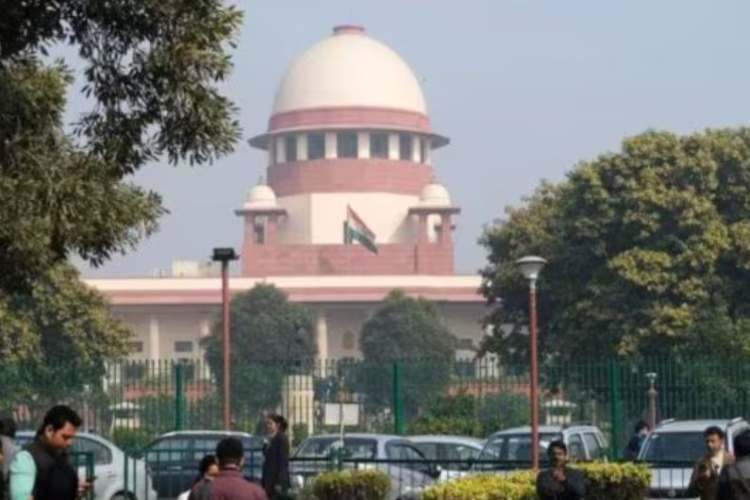The Supreme Court’s decision to nullify JSW Steel’s Rs 19,700 crore resolution plan for Bhushan Power & Steel and send the steelmaker to liquidation is more than a courtroom drama; it is a thunderclap that reverberates through India’s fragile credit markets. It exposes the fault-lines between procedural purity and commercial common sense, and it risks turning the Insolvency and Bankruptcy Code from a highway of revival into a cul-de-sac of litigation. One may applaud the judgment’s legal merits, yet policymakers must now confront its chilling consequences.
Invoking its extraordinary powers under Article 142, the Court faulted the Committee of Creditors (CoC) for blessing a plan that used optionally convertible debentures and for tolerating delays that “undermined the insolvency process”. The Bench insisted that any resolution plan must strictly comply with Section 30(2) and Regulation 38; deviation, however minor, would not be forgiven. That lofty principle sits well in a jurisprudential seminar. In the real economy, companies accumulate warts—regulatory notices, criminal attachments and competing claims—precisely because they are distressed. If every blemish can reopen a consummated deal, very few will dare to pick up the scalpel.
READ I Israel wildfires expose the illusions of preparedness
Bhushan Power ruling setback for IBC regime
The first tremor is already visible. Foreign funds such as Ares SSG, Deutsche Bank and Silver Lake, which entered India’s stressed-asset bazaar by purchasing securities receipts backed by BPSL debt, now face an uncertain claw-back. Global capital is famously impatient; it will not queue up for assets whose legal title can be revisited long after cheques have cleared. In a country where admitted IBC claims already top Rs 10.46 lakh crore, the price of uncertainty is counted not in crores but in credibility.
For domestic lenders, the verdict threatens a second write-down. State Bank of India, with Rs 9,825 crore at stake, stood to recover a little over Rs 4,000 crore—still a stinging 59% haircut but at least cash in hand. Punjab National Bank, Canara Bank, Union Bank and others expected similar balm. Liquidation will almost certainly yield less: steel plants sold piecemeal rarely fetch going-concern value, no matter that BPSL eked out a Rs 11 crore profit in Q3 FY25. If recovery sinks below even the 27 per cent average recorded in FY 2024 resolutions, public-sector banks must brace for fresh provisions and capital-raising. Taxpayers, as ever, will foot the bill.
IBC timelines: The elastic band snaps
When Parliament adopted the IBC in 2016, it promised closure within 270 days. By December 2024, the average case that actually reached resolution had taken 585 days—after deducting periods lost to appeals. The Bhushan story is worse: eight years of wrangling from RBI referral in 2017 to liquidation order in 2025. Each adjournment erodes asset value; each interim attachment by an investigating agency scares new money. The Court’s judgment, insisting on timely value realisation yet upending a plan that was funded and operational, risks proving Voltaire’s quip: the best is the enemy of the good.
One of the IBC’s innovations was to let the CoC, not judges, decide what maximises recovery. The Supreme Court now appears to believe that creditor wisdom ends where judicial scrutiny begins. The ruling creates uncertainty for the future of the IBC. If bankers fear that any structuring tweak—convertible instruments today, staggered payments tomorrow—might later be deemed non-compliant, they will retreat into risk-averse silence. The result will be fewer bids, lower price discovery and, ironically, greater loss to the very creditors the Court seeks to protect.
Procedural exactitude vs economic rescue
The judgment seems to fetishise form over substance. Yet defenders of the ruling counter that finality must rest on plans that are lawful ab initio. The bidders need not be deterred by criminal cases against promoters if they deliver “upfront value and prompt execution”. That is true in theory; in practice, bidders size up legal landmines before signing the term sheet. A regime perceived as retrospectively unforgiving will invite only distressed-asset specialists who buy at basement prices or, worse, leave plants to rust while they litigate for better terms.
India needs an efficient stress-resolution pipeline to revive its investment cycle. Nearly 269 cases obtained NCLT consent in FY 2024—a record, yes, but one achieved on the back of an older backlog. Recovery rates slipped to 27 per cent, timelines lengthened, and the capital trapped in dead companies stayed trapped. The Bhushan precedent could reverse even these modest gains. Every stalled resolution locks up plant, labour and credit. Each aborted bid drags GDP growth a fraction lower. Those who cheer the judgment’s purity must explain how an economy chasing a $5-trillion ambition can afford sanctimonious delay.
The way ahead
First, Parliament must clarify that once a resolution plan is approved by the NCLT and all statutory objections are heard, it attains irreversible finality—save for fraud proved after the fact. Second, the Reserve Bank and the Insolvency and Bankruptcy Board should issue joint guidelines on permissible financial instruments, so CoCs are not second-guessed. Third, investigative agencies must synchronise with insolvency courts: attachments that frustrate a duly approved plan should be time-bound or ring-fenced, not perpetual. Finally, the Supreme Court itself could consider constituting a specialised bench for IBC appeals, lest commercial expediency perish under doctrinal cross-fire.
The Bhushan Power judgment may reduce the most business-friendly reform since liberalisation to a footnote. The law is entitled to demand compliance, but the economy is entitled to legal certainty. The common citizen, who ultimately underwrites bank bailouts and mourns lost jobs, deserves both. If we cannot strike that balance, we will have substituted one set of delays for another—this time adorned with the imprimatur of the Supreme Court. And that, to borrow Justice Holmes’s phrase, is hard law but bad economics.

